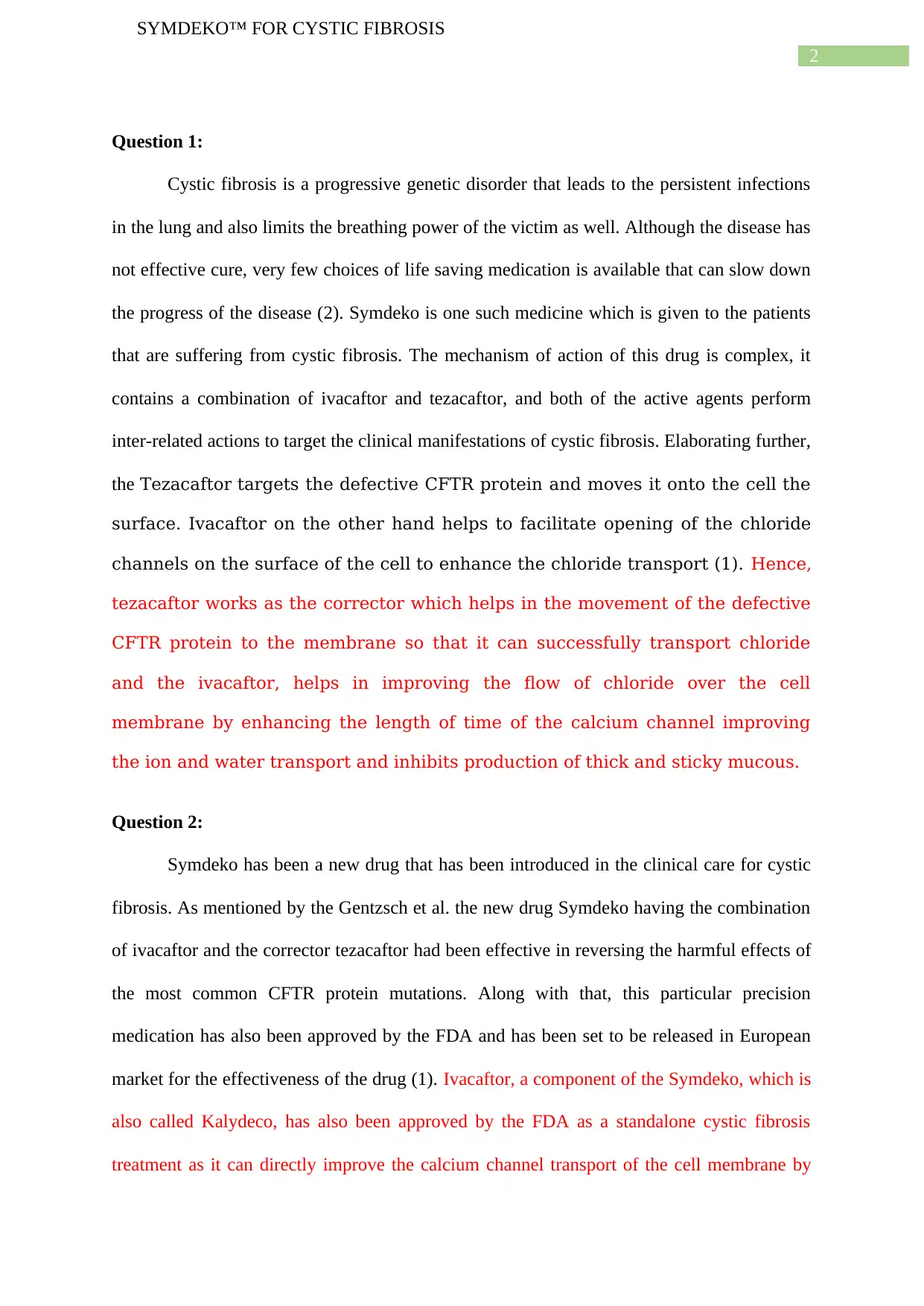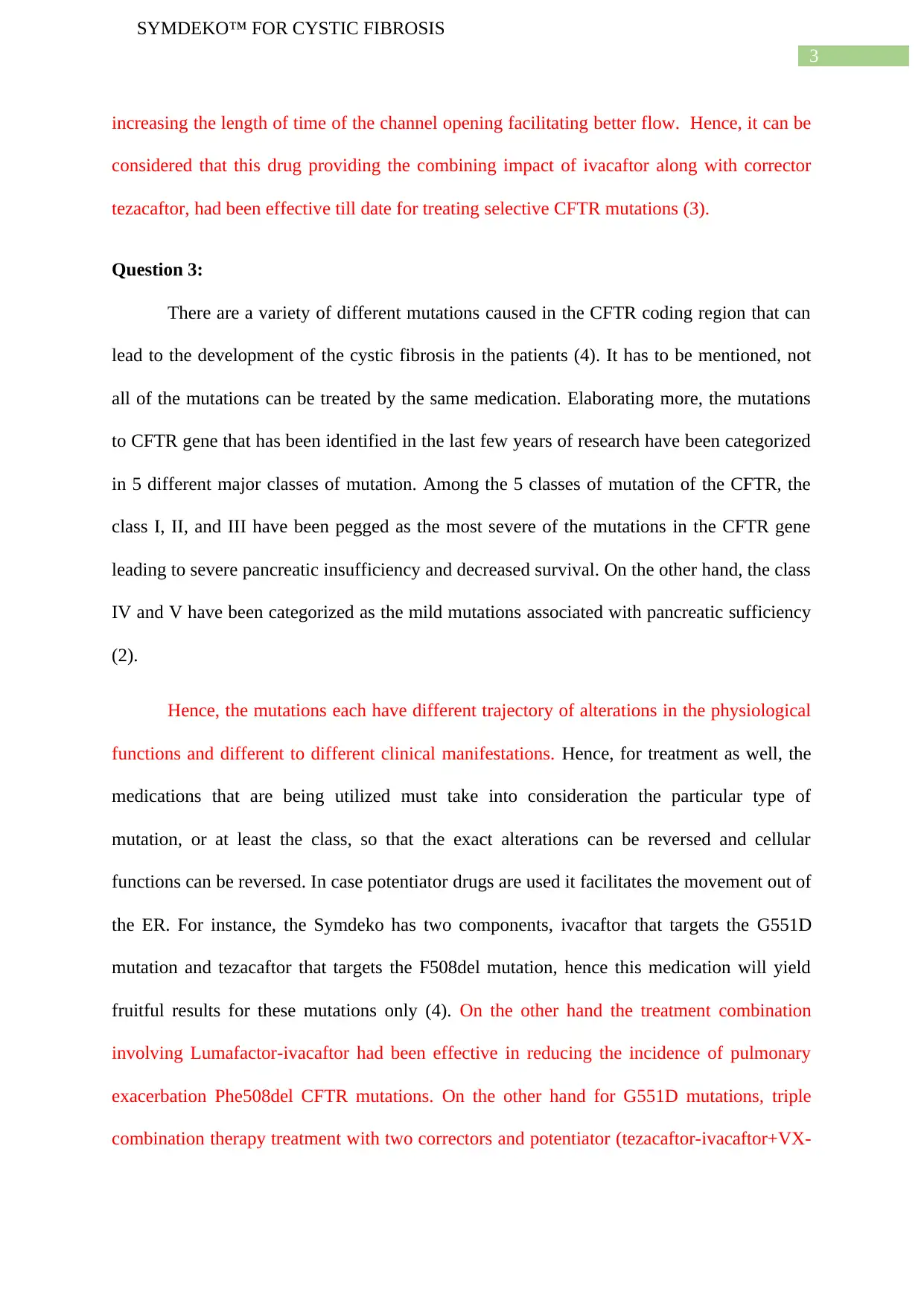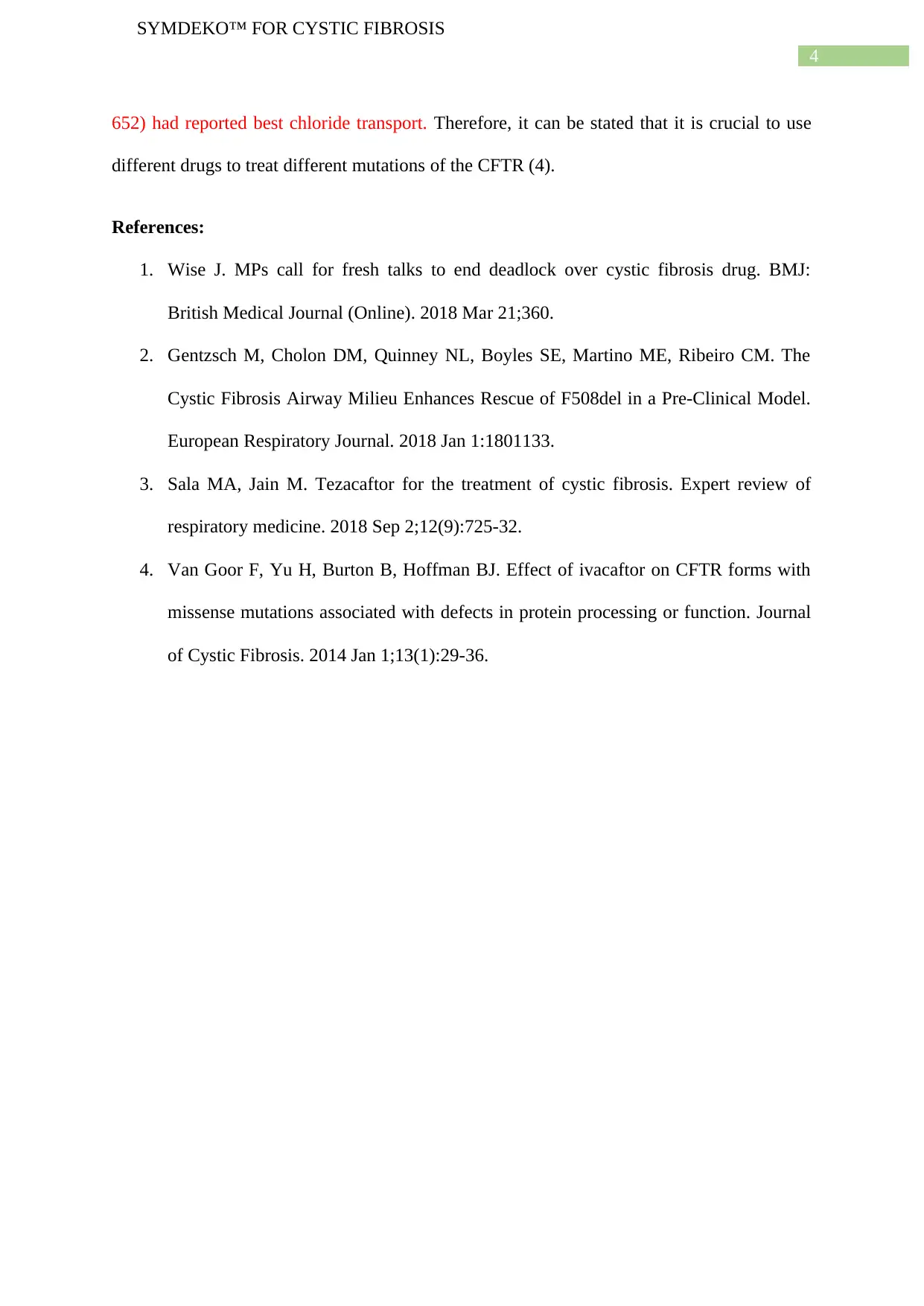Symdeko Drug: Mechanism of Action for Cystic Fibrosis Treatment
VerifiedAdded on 2023/05/30
|5
|972
|487
Report
AI Summary
This report provides a comprehensive analysis of Symdeko, a medication used in the treatment of cystic fibrosis (CF). The report begins by defining CF as a progressive genetic disorder characterized by lung infections and breathing difficulties, highlighting the role of Symdeko in slowing disease progression. It delves into Symdeko's mechanism of action, emphasizing the combined effects of ivacaftor and tezacaftor in targeting CFTR protein defects and improving chloride transport. The report also discusses Symdeko's clinical effectiveness, FDA approval, and its ability to address specific CFTR mutations. Furthermore, it explores the different classes of CFTR mutations and how Symdeko's components, ivacaftor and tezacaftor, are designed to treat specific mutations. The report concludes by emphasizing the importance of tailoring treatments to the specific CFTR mutation to ensure the best therapeutic outcomes. The report references several research papers to support its findings, providing a detailed overview of Symdeko's role in CF treatment.
1 out of 5












![[object Object]](/_next/static/media/star-bottom.7253800d.svg)